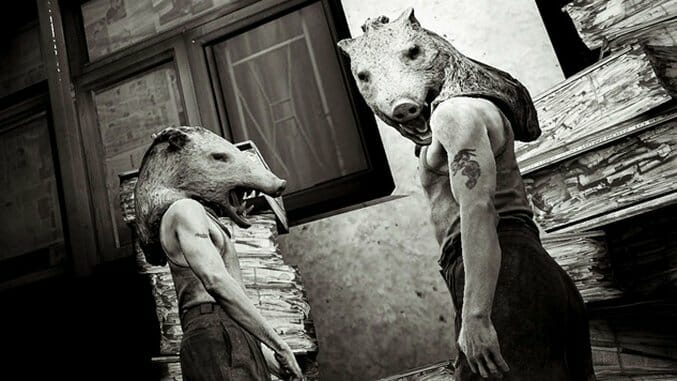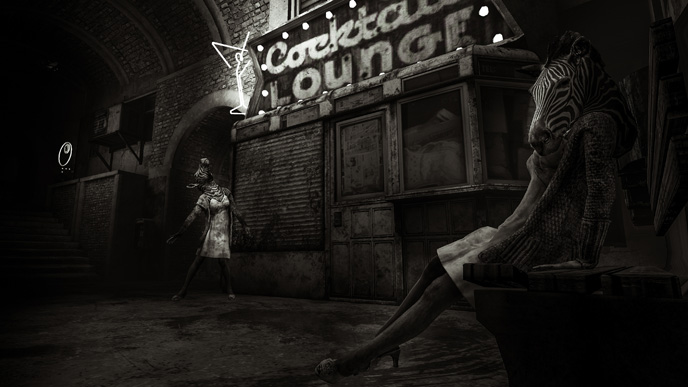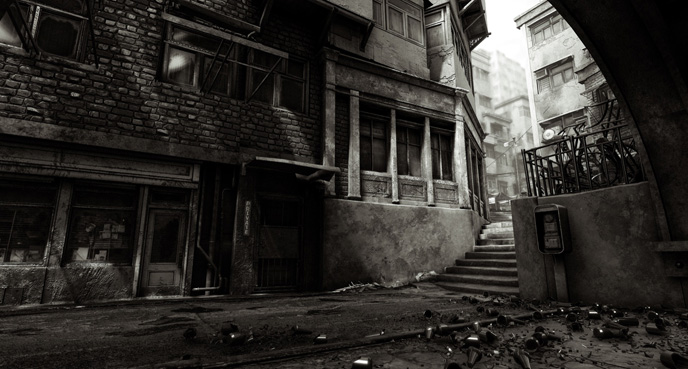“Banging On Weird Shit In The Desert”: Exploring Game Audio with Cory Davis
Games Features Cory Davis
“Yeah he gave me a ton of great material.” I was chatting with a games writer I interviewed last year, following up on an article yet to be published. I’d just been given the recording of my hour long interview with Cory Davis, environmental artist and game designer of at least a half dozen titles, perhaps most notably Spec Ops: The Line, the controversial shooter developed by Yager and released by 2K in 2012. I had already begun typing my transcription, unsure how to parse the passionate tangents and breathless segues peppered throughout the audio, when I got to the bit about his audio recording trips in the Santa Monica mountains. “He said something about going out to the mountains and banging on some weird shit in the desert.”
“Ha!” he replied. “That sounds exactly like Cory.”
I can think of no better introduction to the creative intensity of Cory Davis than that.
I had the chance to speak with Davis about his work on Here They Lie last year in an hour long conversation that, in its scope, couldn’t be condensed to one article. I had expected a discussion on ethics in horror VR development. What I didn’t anticipate was the revelation of how seriously he takes the design process, and how far he will go to ensure his work is a reflection of a thoughtfully cultivated experience.
Here They Lie was released last October on VR devices, but my interest in it precedes that by about four months, having first heard of the game during E3 2016. I found out about it, as one does, after bumming a light from a couple of guys who turned out to be John Garcia-Shelton and Richard Smith, head of production and art director on Here They Lie at Tangentlemen (Sony’s Santa Monica studio), respectively. Later I was able to follow up with Cory Davis, who (along with Toby Gard) served as co-creative director on the game, and pick his brain about the role of audio in game development. More than an element of ambiance or atmosphere, what the player hears can affect how the player feels, and in horror and VR design, this can be used to tremendous effect.
In developing Here They Lie the studio focused on heightening the player’s connection to the game by blurring the line between fiction and reality. The team knew that the power of the experience would rely on the establishment of a strong physical reality, and thus sought to push the boundaries on the player’s immersion by reinforcing their sense of presence. This meant incorporating numerous real world elements into the game. Many of these manifested as audio techniques, which were used to subconsciously pull the player into the game’s emotional tide.
“The audio itself was like a narrator. And not just the score and the music, but every aspect of the environment audio. If you pay attention to the game, there are a lot of small details that are meant to make you feel certain ways as you’re approaching certain events. For example when you go into the end of the area we’re called The Narrows for the first time, the area where you see burned people…you may not notice it, [but] I have electrified the entire area. The audio is full of sparks and small transmissions in the air, and the sound of flowing electricity.”
Another way they sought to strengthen the player’s immersion was creating an art style that relied on objects scanned from their nearby surroundings in Southern California and then inserted directly into the game. Art director Richard Smith would use his drone to scan different things that inspired the team, be it a door, the facade of a building, or a broken street sign, drawing from the desert, the streets of Los Angeles, or wherever they felt a connection. The end result was a modular kit that used real-world items to piece together a virtual reality.
Davis says, “The game is an interesting blend of scanned models that actually are able to be modularly snapped together to create a lot of different spaces, and then we did a lot of work to be able to create surrealism out of this realistic spaces so that they can be warped and spun out into splines into strange directions and things like that so you can have strange experiences in a realistic world with things that are actually from Los Angeles.”
Davis believes that art should be influenced by the place where it was created, and this extended not just to the use of audio, but the development of the game’s audio as well. The desert, he says, gave him the “strange feeling that there’s ghosts out there that want to communicate”, so he loaded up the team with battery packs and gear to trek out to a remote dirt road outside of a cave. There they recorded soundtrack by bouncing “strange instruments” off the rock walls and nearby Joshua trees, later traveling out to Topanga Canyon as well. “There’s a number of strange bridges and groves and interesting places where we recorded foley and environment audio, a lot of the wind that you’ll hear in the game and animal sounds and music and drone-y atmosphere was either out there in the desert or in Topanga Canyon.” Davis also drew from more industrial sources to achieve audio effects for the game’s subway station, relying on amusement parks or, in one surprising case, a public transportation system. “We even took our gear up to San Francisco and recorded the BART train there because it has this sort of scary brakes screeching sound.
“At the start of the game, you’re actually hearing a final recording of a real train in San Francisco.”
Since its release, players have had a strong reaction to some of the bizarre audio logs in Here They Lie, which Davis reveals is actually based directly on recordings from people in Los Angeles. He spent weeks in Venice Beach and other areas in the city, starting conversations with people on the streets, mostly musicians and street performers, and taping the results. He cites the practice as adding to the authenticity of the game.
“I probably spent weeks on Venice Beach and in other places around LA, just trying to get people to talk to me about their own life philosophies, asking them what they thought about death, about politics, the poor, nations, and races. I asked them what they thought about birth and where we came from and why we’re here. Then we pulled out the most contrasting and interesting out of those and placed them throughout the game. And there are things that even in the words that are spoken by those people that we interviewed that connect directly into the themes of the game and what you’re meant to understand about it.
And some of them are meant to sound ridiculous because a lot of what we do on this Earth as humans is ridiculous. And that’s part of being human. And we live amongst all types.”
The passion of Cory Davis is not limited to audio; you can see his environment and level design work in several other games. The crafting of an atmospheric experience relies on several elements and factors. But either way, the best games are the ones both seen and heard.
Holly Green is the assistant editor of Paste Games and a reporter and semiprofessional photographer. She is also the author of Fry Scores: An Unofficial Guide To Video Game Grub. You can find her work at Gamasutra, Polygon, Unwinnable, and other videogame news publications.


